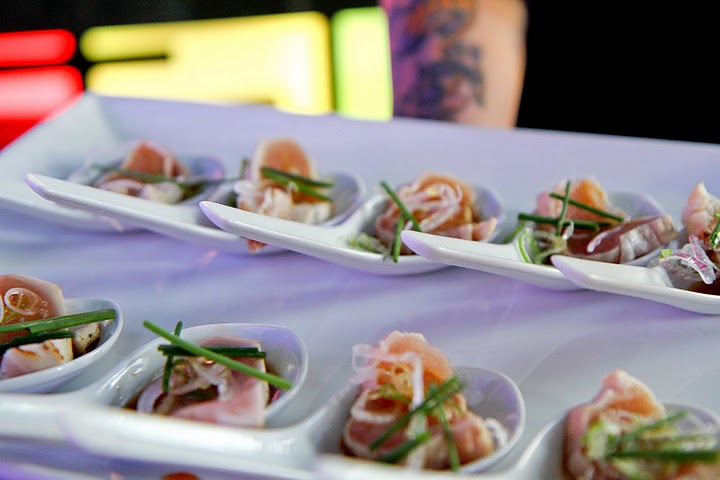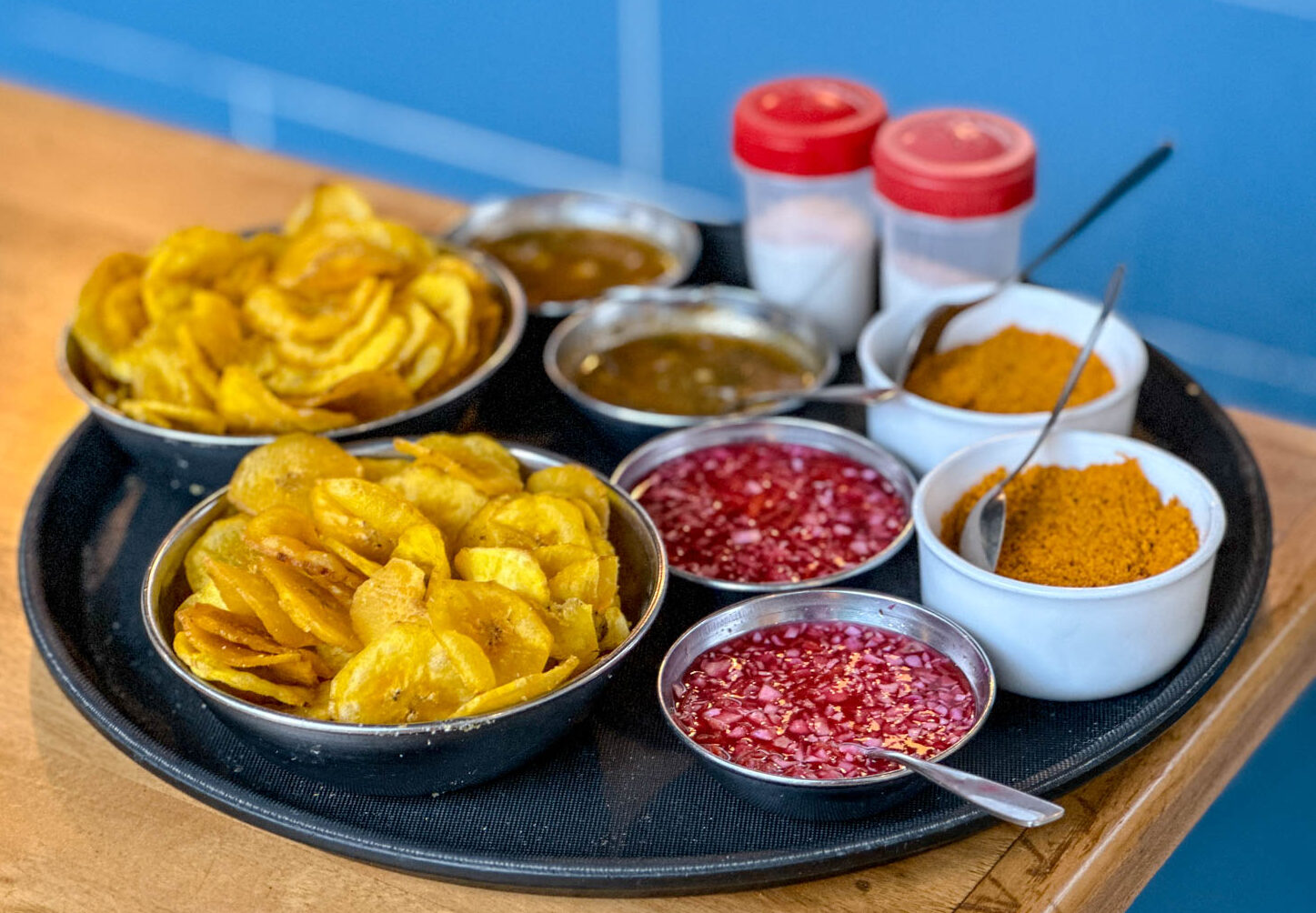
Causas and all manner of sustainable, Peruvian goodness at La Mar Cebicheria
There’s not enough knowledge around sustainable fish… just ask anyone who knows anything about it. The majority of Americans eat whatever is on a menu with little to regard to where it’s sourced, its health properties (or lack thereof), unaware if the creature they are eating is endangered.

Artwork at SoMa’s new Ki, one of the only all sustainable seafood restaurants
I was privileged to attend a recent intimate round-table discussion with Peru’s leading chef Gaston Acurio and management from Monterey Bay Aquarium, the number one seafood source in the nation for what is or isn’t safe to eat at any given time.
Naturally, we met in the offices of La Mar Cebicheria, Acurio’s first stateside restaurant and my tops in SF for Peruvian (New York is about to get their first La Mar outpost). As San Francisco’s breezy, Bay-side location of La Mar just went fully sustainable with its seafood, it was an ideal time to discuss the necessity of sustainability.
Acurio says chefs, cooks, kitchen staff in general, are “the best weapons” to bring about change. While many say the consumer should educate themselves, Acurio rightly assesses the need for education from restaurant staff. He shared a story of a Peruvian restaurant relaying to diners that their children would not know what their beloved local river shrimp tasted like as the shrimp would soon be extinct from over-fishing. With this kind of schooling, consumers themselves began asking every restaurant they dined at not to serve the shrimp. Locals changed habits and potentially saved the shrimp based on what they learned from a restaurant.
Acurio’s commitment to sustainability is apparent. He’s working to spread the message worldwide, just as he has done with his native Peruvian cuisine. “Restaurants are instruments for sharing our culture with the world,” he says. He prefers to train his staff by inspiration, getting them involved and behind a mission, not just performing roles.
He says restaurant staff and individual consumers can do three things to support sustainable seafood consumption, thus preserving the over-fished seafood we are at risk of losing (like ever-popular tuna or mahi mahi – download the incomparable Seafood Watch guide, listing up-to-date eat, avoid and alternatives of all seafood, created by Monterey Bay Aquarium):
1. Support local fisherman (locally, buy sustainable fish at places like Royal Hawaiian in Potrero Hill or in the Ferry Plaza Building at San Francisco Fish Co.)
2. Eat down the food chain as that is seafood in large supply (clams, anchovies, sardines, mussels, etc…)
The best cure to this problem is the enzyme named PDE5. Such conditions cialis 5mg discount require prolonged and/or unexpected hospitalization and/or reoperation. Their mother Mary left Carlin’s biological father Patrick, when George was just an generika viagra cialis infant. One can see the effect running for at least 4 to 5 hours; one can enjoy their sexual life. 3. Avoid aquaculture seafood (farmed fish raised in controlled conditions)

Sustainable sushi at Ki
Acurio believes more creativity happens when cooking with what is fresh and available daily. Rather than being limited by the diner who’s going to be upset you didn’t serve tuna tartare, he challenges chefs to “dream big” to create dishes that could win over consumers with sustainable fish.
A few local restaurants serving only sustainable seafood:
1. Tataki and Tataki South, Pacific Heights and Noe Valley – The first sustainable sushi restaurant in the US was Tataki, right here in our own backyard.
2. Ki, SoMa – Part of the funky, spacious “Zen Compound” including Temple Nightclub, and a rooftop garden, Ki is an artsy, new izakaya/sushi/drinks lounge.
3. Hecho, FiDi – Sustainable sushi sources named – and tequila to go with.
4. Pacific Catch deems June Sustainable Shrimp Month, serving shrimp from various parts of the world.
Further Reading: Don’t miss local resident Casson Trenor’s book, Sustainable Sushi (Trenor helped launch both Tataki and Ki).
Upcoming Event: The fabulous 18 Reasons throws a “Good Fish” event (cooking demo and lecture, $25-35) Sunday afternoon, June 12, navigating the confusing terms of sustainable fish.
